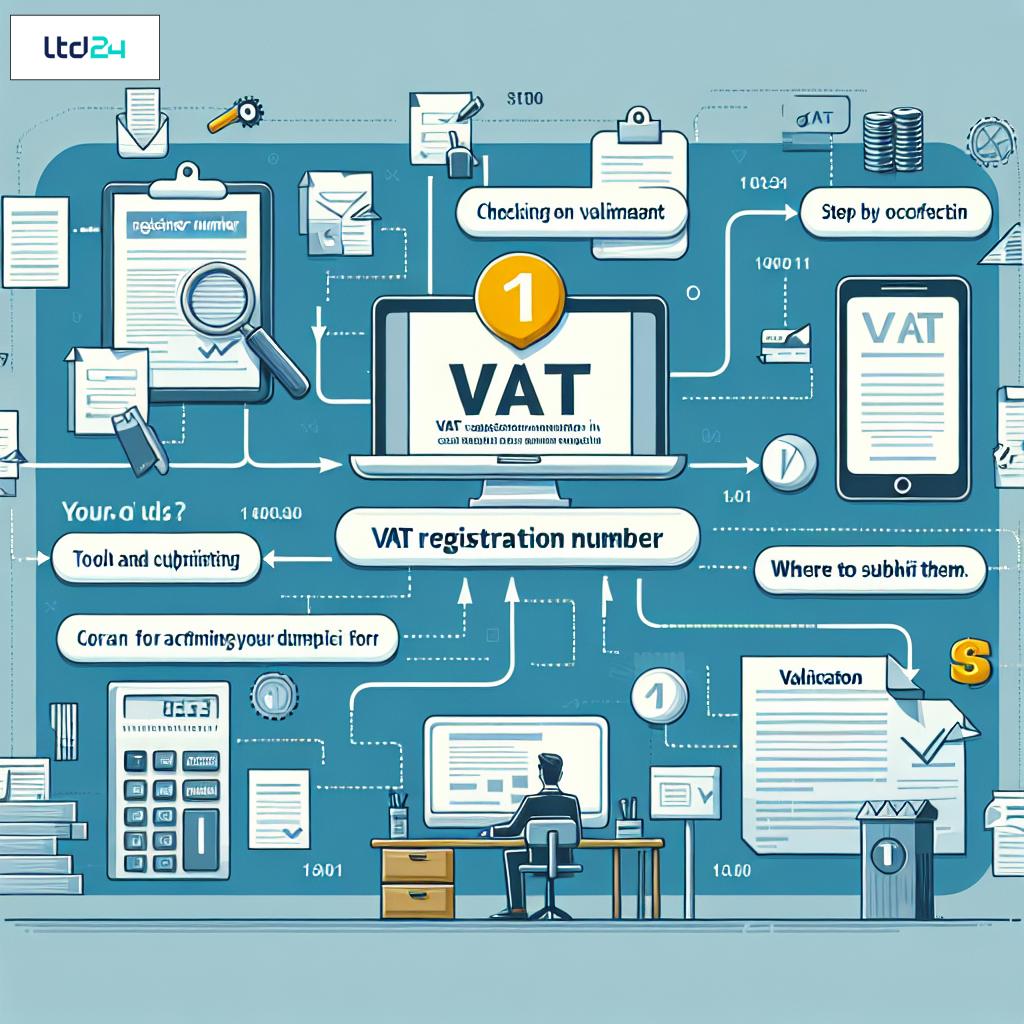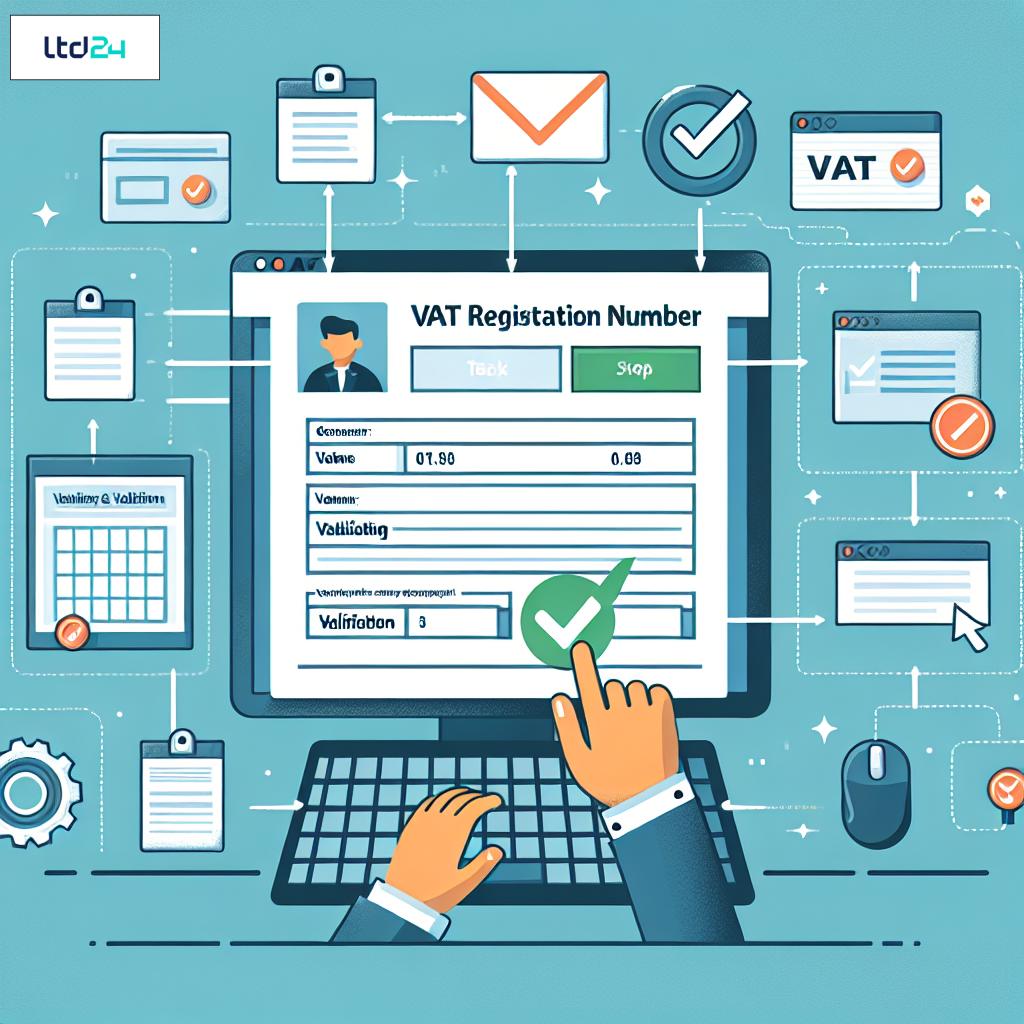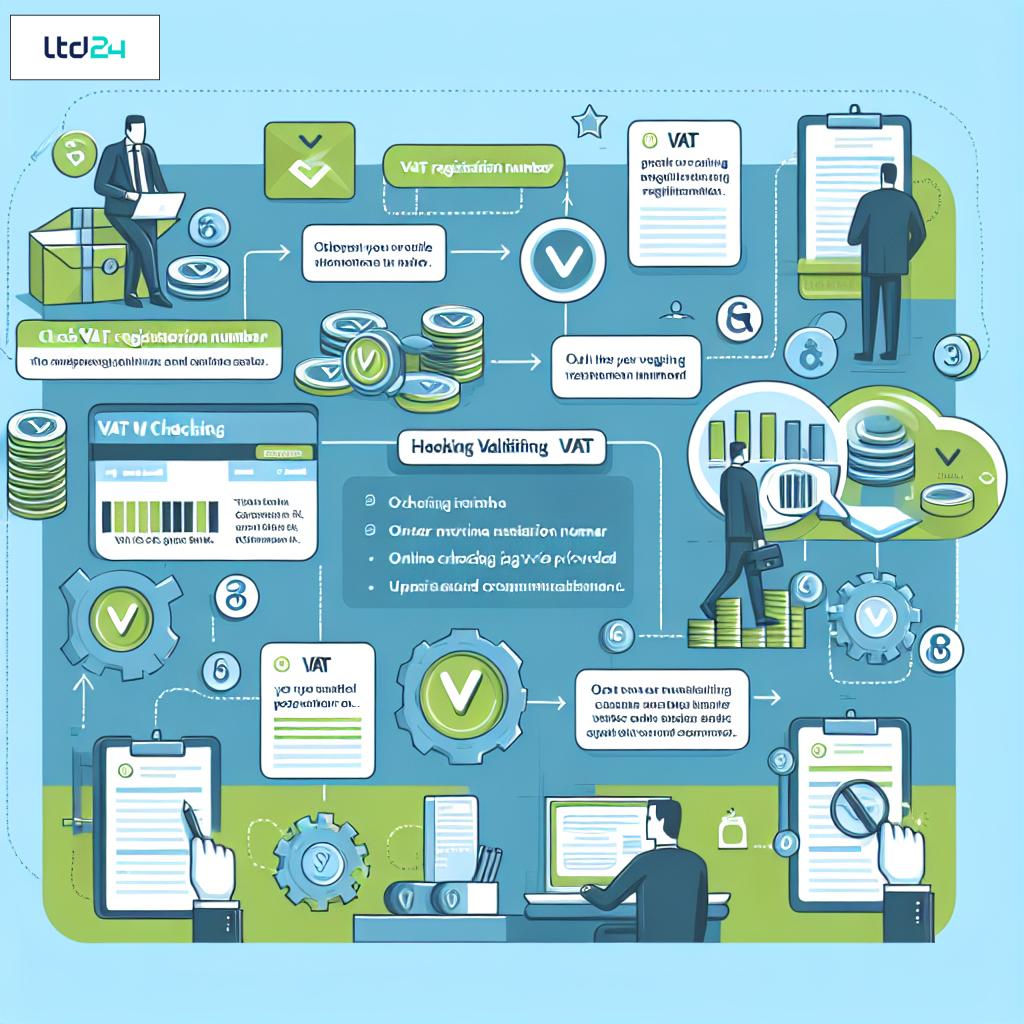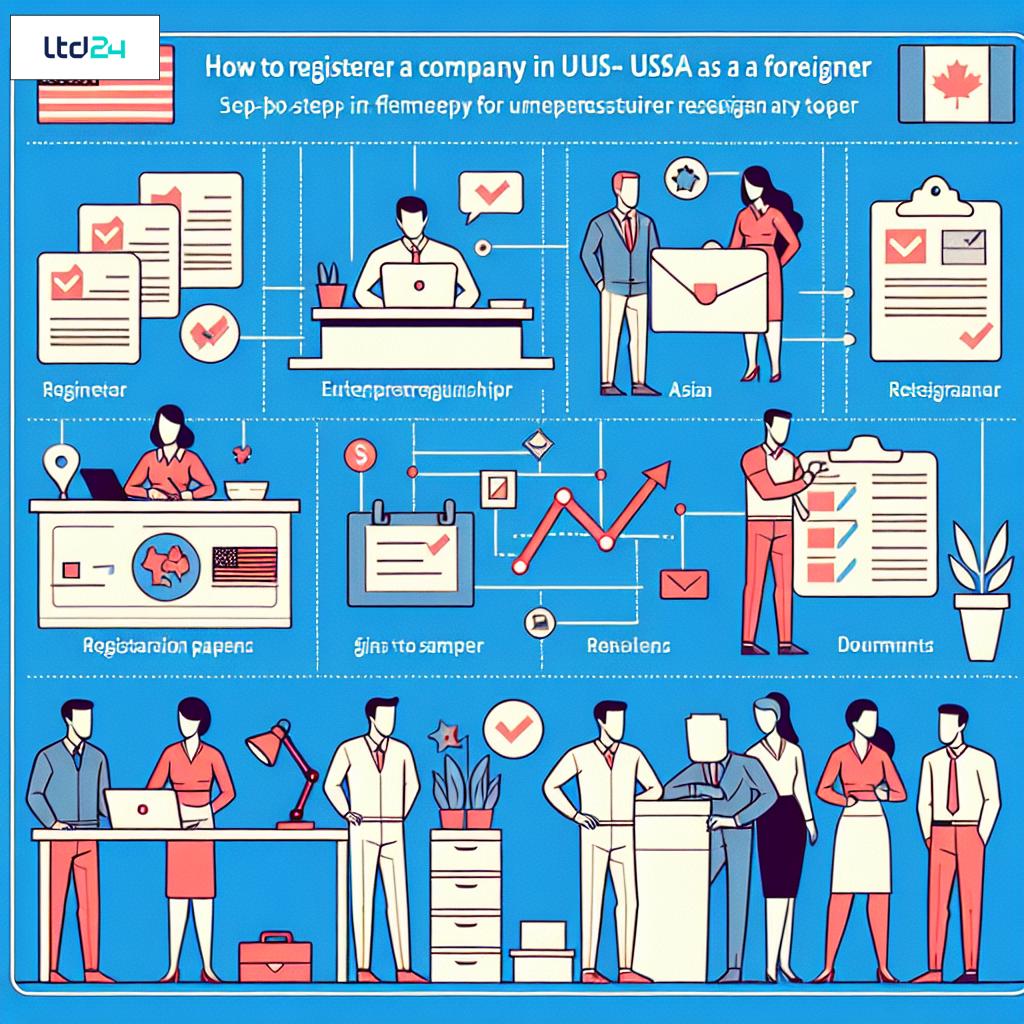Understanding Inheritance Tax: Basic Principles
Inheritance Tax (IHT) represents one of the most significant fiscal obligations faced by individuals planning their estate in the United Kingdom. This tax, levied on the estate of a deceased person, can substantially reduce the wealth transferred to beneficiaries if not properly managed. The current standard rate stands at 40% on the portion of the estate that exceeds the tax-free threshold, commonly referred to as the nil-rate band. This threshold is currently set at £325,000 per individual, with additional allowances available under specific circumstances. Many taxpayers incorrectly assume that IHT only affects the extremely wealthy, when in reality, rising property values have brought many middle-class families within its scope. Understanding the fundamental principles of inheritance taxation is essential for effective estate planning and ensuring that your beneficiaries receive the maximum possible benefit from your lifetime’s accumulation of assets. The UK’s inheritance tax regime presents both challenges and opportunities for forward-thinking taxpayers who wish to mitigate potential tax liabilities through legitimate planning strategies.
The Nil-Rate Band: Your Basic Tax-Free Allowance
The nil-rate band forms the cornerstone of inheritance tax planning, providing each individual with a tax-free allowance of £325,000. This threshold has remained unchanged since April 2009, despite substantial inflation and property value increases during this period. When properly utilized, married couples and civil partners can combine their allowances, effectively creating a joint threshold of £650,000 through the transferable nil-rate band provision. This mechanism allows the unused percentage of the nil-rate band from the first deceased spouse or civil partner to be transferred to the surviving partner, potentially doubling the tax-free amount available upon the second death. For instance, if a husband dies and leaves his entire estate to his wife (which would be exempt from IHT due to the spousal exemption), 100% of his nil-rate band remains unused and can be transferred to his wife’s estate upon her subsequent death. This transferability creates substantial planning opportunities, particularly for couples with modest to significant estates. It’s worth noting that proper documentation must be maintained to successfully claim this additional allowance, requiring executors to submit the appropriate forms to HMRC within the specified timeframes.
Residence Nil-Rate Band: Additional Relief for Family Homes
Introduced in April 2017, the Residence Nil-Rate Band (RNRB) provides additional inheritance tax relief specifically for family homes. This important supplement to the standard nil-rate band was implemented in recognition of rising property values and aims to reduce the inheritance tax burden when a home is passed to direct descendants. Currently set at £175,000 per person, the RNRB can potentially increase an individual’s tax-free threshold to £500,000 when combined with the standard nil-rate band. For married couples and civil partners, this could mean a combined threshold of up to £1 million. However, the RNRB comes with specific conditions and limitations. The property must be passed to direct descendants (children, grandchildren, step-children, adopted children, or foster children) to qualify for this relief. Additionally, the RNRB is gradually reduced for estates valued over £2 million, with a taper that completely eliminates the benefit for estates worth more than £2.35 million. This tapered reduction often necessitates careful planning for individuals with substantial estates to maximize available tax reliefs. The residence nil-rate band represents a significant potential tax saving for many families, but its complexity requires careful consideration within a comprehensive inheritance tax strategy.
Exemptions and Reliefs: Legitimate Ways to Reduce IHT Liability
Understanding the full spectrum of available exemptions and reliefs is crucial for minimizing inheritance tax exposure. Beyond the nil-rate band and residence nil-rate band, the UK tax code provides numerous legitimate mechanisms to reduce IHT liability. The spousal exemption stands as perhaps the most valuable, allowing unlimited transfers between spouses or civil partners during life or upon death, completely free of inheritance tax (subject to domicile considerations). Business Property Relief (BPR) and Agricultural Property Relief (APR) offer potential relief at rates of 50% or 100% on qualifying business and agricultural assets, making them powerful tools for business owners and farmers. The annual gift allowance permits individuals to give away up to £3,000 each tax year free of inheritance tax implications, with unused allowances carrying forward for one year only. Additionally, small gifts of up to £250 per recipient per tax year remain exempt, along with wedding gifts (subject to relationship-based limits) and gifts to charities or political parties. Regular gifts made from normal expenditure out of income can also be exempt provided they don’t reduce the donor’s standard of living. Each of these exemptions requires careful documentation and strategic implementation to effectively reduce the overall tax burden on your estate. For specialized advice on complex relief structures, consulting with a tax advisor experienced in inheritance planning is strongly recommended.
Seven-Year Rule: The Importance of Timing in Gift Planning
The seven-year rule represents a fundamental timeframe in inheritance tax planning that can significantly impact the tax efficiency of lifetime giving. Under current legislation, potentially exempt transfers (PETs) – gifts made during one’s lifetime to individuals – become completely exempt from inheritance tax if the donor survives for seven years after making the gift. This creates a powerful incentive for early planning and gift-giving. Should the donor die within seven years, a taper relief system applies, reducing the applicable tax rate based on the time elapsed between gift and death. Specifically, gifts made between three and seven years before death benefit from reduced tax rates: 80% of the full IHT rate applies for deaths occurring 3-4 years after the gift, 60% for 4-5 years, 40% for 5-6 years, and 20% for 6-7 years. The strategic implementation of the seven-year rule requires careful consideration of one’s health prospects, financial needs, and overall estate planning objectives. It’s worth noting that certain gifts, such as those into discretionary trusts, constitute chargeable lifetime transfers rather than PETs and may trigger immediate tax liabilities if they exceed available nil-rate band allowances. The interaction between the seven-year rule and other aspects of inheritance tax planning creates complex scenarios requiring professional advice to navigate effectively, particularly for substantial estates or complex family situations.
Trusts as IHT Planning Tools: Benefits and Considerations
Trusts remain powerful vehicles for inheritance tax planning, offering flexibility and control while potentially reducing tax liabilities. These legal arrangements allow assets to be managed by trustees for the benefit of specified beneficiaries, creating opportunities for tax-efficient wealth transfer across generations. Different trust structures offer varying tax advantages: discretionary trusts provide maximum control over asset distribution but may incur immediate tax charges, while interest in possession trusts can offer income benefits to life tenants while preserving capital. Bare trusts provide straightforward structures for minor beneficiaries. From an inheritance tax perspective, assets placed in certain trusts may fall outside your estate after seven years (subject to relevant survivorship provisions), potentially reducing eventual IHT liability. Additionally, trusts can protect assets from claims by future creditors, provide for beneficiaries with special needs, or manage wealth for minor beneficiaries until they reach an appropriate age. However, the tax treatment of trusts has become increasingly complex, with potential charges on entry, periodic charges every ten years, and exit charges when assets leave the trust. The 2006 changes to trust taxation significantly altered the landscape, making professional guidance essential. When considering trust arrangements, it’s crucial to balance tax efficiency with practical family needs and long-term objectives. Consulting with both legal and tax professionals experienced in trust administration ensures optimal structure selection and compliance with increasingly complex regulatory requirements.
Life Insurance Solutions: Covering the IHT Bill
Life insurance represents a pragmatic solution to inheritance tax liabilities, providing liquidity precisely when estates face tax demands. Rather than focusing solely on reducing IHT, this approach acknowledges the tax liability but ensures funds are available to settle it without forcing liquidation of estate assets. Whole of life policies, written in trust, stand as the most effective insurance arrangement for inheritance tax planning. By establishing the policy in trust, the insurance proceeds remain outside the estate for tax purposes while providing immediate funds to beneficiaries who can use them to settle inheritance tax obligations. The trust structure ensures the policy proceeds don’t exacerbate the inheritance tax situation by becoming part of the taxable estate themselves. For married couples or civil partners, joint life second death policies offer particularly cost-effective solutions, paying out only when the second partner dies – typically when inheritance tax becomes due. The cost of premiums must be carefully weighed against potential tax savings and the preservation of estate assets. Factors influencing premium amounts include age, health status, lifestyle factors, and coverage level. For substantial estates, these policies often represent excellent value compared to the alternative of beneficiaries being forced to sell property or business assets in unfavorable circumstances to meet tax obligations. When implementing life insurance solutions, careful consideration must be given to trust wording, policy ownership, and integration with broader estate planning objectives to ensure optimal outcomes.
Business Property Relief: Protecting Family Enterprises
Business Property Relief (BPR) represents one of the most valuable inheritance tax exemptions available to business owners in the UK. This relief, designed to prevent the dismantling of family businesses to meet inheritance tax obligations, provides either 50% or 100% relief from inheritance tax on qualifying business assets. To qualify for the full 100% relief, assets must consist of unquoted shares in trading companies or an interest in an unincorporated business. Listed company shares may qualify for 50% relief if the shareholder has controlling interest. Property, machinery, or plant used predominantly in a qualifying business owned by the transferor may also receive 50% relief. Crucially, the business must be predominantly engaged in trading activities rather than investment activities, with HMRC generally applying an 80:20 rule (requiring at least 80% trading activities). The deceased or donor must have owned the business or business asset for at least two years before the transfer to qualify for BPR. This powerful relief means that qualifying business assets can potentially pass entirely free from inheritance tax, making it essential for business owners to structure their affairs to maximize BPR availability. Common pitfalls that can jeopardize BPR include excessive cash reserves beyond business needs, significant investment assets on the balance sheet, or failing to maintain proper documentation demonstrating the trading nature of the business. Strategic planning around business succession and ownership structures can significantly enhance BPR availability and overall inheritance tax efficiency.
Agricultural Property Relief: Essential for Farming Families
Agricultural Property Relief (APR) provides vital inheritance tax protection for farming assets, offering either 50% or 100% relief on the agricultural value of qualifying property. This relief applies to agricultural land or pasture, woodland, farm buildings, farmhouses (subject to specific conditions regarding character and occupation), and certain other farming-related assets. To qualify for the full 100% relief, the property must be owner-occupied or let on a short-term tenancy agreement initiated after August 31, 1995. Agricultural property let on other tenancy types generally qualifies for 50% relief. The ownership period requirement stipulates that the transferor must have owned and used the property for agricultural purposes for at least two years if owner-occupied, or seven years if tenanted to others. One of the most complex aspects of APR relates to farmhouses, which must be of a "character appropriate" to the agricultural land and occupied by the individual actively farming the associated land. HMRC scrutinizes these claims carefully, examining factors such as the house’s size in relation to the farm, its historic connection to the farmland, and the genuine agricultural use of the property. It’s crucial to note that APR only applies to the agricultural value of the property, which may differ from its market value, particularly when development potential exists. The interaction between APR and BPR can be complex, especially for diversified farming businesses with both agricultural and commercial activities. Professional advice from tax specialists with specific agricultural expertise is essential for farming families seeking to optimize their inheritance tax position.
Gifts with Reservation of Benefit: Avoiding Pitfalls
The Gifts with Reservation of Benefit (GROB) rules represent a significant anti-avoidance measure in the UK inheritance tax regime, designed to prevent individuals from giving away assets while continuing to enjoy their benefits. Understanding these provisions is crucial to avoid unwittingly triggering tax liabilities through incomplete gifting strategies. A gift with reservation occurs when an individual makes a gift but retains or receives some benefit from the gifted property. The classic example involves parents giving their home to children while continuing to live there rent-free. In such cases, despite the legal transfer of ownership, the property remains within the parents’ estate for inheritance tax purposes until the reservation of benefit ceases or upon their death. To avoid GROB issues, the donor must completely relinquish any benefit from the gifted asset. Alternatively, if continuing to enjoy benefits is necessary, the donor must pay full market value for those benefits – for instance, paying a commercial rent for occupying a previously gifted property. Various schemes designed to circumvent these rules, such as home reversion plans or complex trust arrangements, have been specifically targeted by additional anti-avoidance legislation. The Pre-Owned Asset Tax (POAT) further reinforces these provisions by imposing income tax charges on arrangements designed to avoid GROB rules. When considering lifetime gifting strategies, particularly involving high-value assets like property, professional guidance is essential to navigate these complex provisions and avoid potentially costly tax consequences.
Pre-Owned Asset Tax: The Second Line of Defense
The Pre-Owned Asset Tax (POAT) legislation introduced in 2005 represents HMRC’s secondary defense against sophisticated inheritance tax avoidance schemes designed to circumvent the Gifts with Reservation of Benefit rules. This income tax charge targets arrangements where individuals give away assets but continue to derive benefits from them through complex legal structures that previously fell outside GROB provisions. POAT primarily affects three categories of arrangements: situations where an individual occupies or has use of land or property they previously owned; arrangements where an individual possesses or uses chattels (movable property) they formerly owned; and scenarios involving intangible property, particularly where individuals can benefit from settlement funds they contributed to. Rather than treating these assets as remaining within the donor’s estate (as GROB rules would), POAT imposes an annual income tax charge based on the market rental value of the property or asset being used. This effectively creates a tax cost for continuing to benefit from assets ostensibly given away. Importantly, taxpayers can elect for the GROB rules to apply instead of POAT if that produces a more favorable outcome. The interaction between POAT and other inheritance tax planning strategies creates complex scenarios requiring careful analysis. Certain exemptions exist, including arrangements established before March 17, 1986, and situations involving divorced or separated couples. Given the complexity of these provisions and the significant tax implications of non-compliance, professional advice is essential when structuring arrangements that might potentially trigger POAT charges or when reviewing existing family asset structures.
Lifetime Giving Strategies: Beyond the Basics
Effective lifetime giving strategies extend far beyond simple cash gifts, encompassing a range of sophisticated approaches that can significantly reduce potential inheritance tax liabilities. Strategic lifetime giving requires careful consideration of both tax efficiency and practical family needs. Beyond utilizing the annual £3,000 exemption and small gifts allowance, consider making gifts that qualify as normal expenditure out of income – these can be of unlimited value provided they form part of your normal expenditure, are made from income rather than capital, and don’t reduce your standard of living. Educational trusts for grandchildren can provide tax-efficient funding for school or university fees, potentially passing significant value down generations without inheritance tax implications. For business owners, gifting shares in family businesses to the next generation can be particularly advantageous, especially when combined with Business Property Relief. Consider making charitable gifts during your lifetime rather than in your will – this not only reduces your estate for inheritance tax purposes but can also generate income tax relief. For higher-value assets that may appreciate significantly, gifting them early can "freeze" their value for inheritance tax purposes, with any subsequent appreciation occurring outside your estate. When making substantial gifts, consider potential capital gains tax implications, which sometimes necessitate holding assets until death to benefit from the tax-free uplift in base cost. For individuals with surplus income, funding life insurance policies held in trust for beneficiaries can provide significant inheritance tax-free funds. Always document lifetime gifts properly and maintain clear records to simplify matters for executors and demonstrate compliance with various exemption requirements.
Estate Planning for Business Owners: Special Considerations
Business owners face unique inheritance tax planning challenges and opportunities that require specialized strategies beyond standard estate planning approaches. The interplay between personal and business assets creates complex scenarios demanding careful structuring to optimize tax outcomes while ensuring business continuity. Business Property Relief (BPR) stands as the cornerstone of inheritance tax planning for business owners, potentially providing 100% relief on qualifying business assets. Maintaining BPR eligibility requires vigilant management of business activities and assets, ensuring the business remains predominantly trading rather than investment-focused. For incorporated businesses, consider creating different share classes with varying rights, allowing precise control over income and capital distribution to different family members while potentially facilitating staged transition of business control. Family Investment Companies (FICs) present alternative structures for managing family wealth in tax-efficient ways, particularly for business proceeds following a sale. Succession planning should incorporate clear documentation regarding business continuity in the event of the owner’s death, including appropriate provisions in shareholders’ agreements and articles of association. Cross-option agreements backed by appropriate life insurance can provide mechanisms for business partners to acquire the deceased’s share while ensuring family members receive fair value. For business owners contemplating retirement, consider phased gifting of business interests to the next generation, potentially utilizing holdover relief for capital gains tax purposes while beginning the seven-year clock for inheritance tax purposes. Partnership structures offer particular flexibility for transitioning agricultural or professional service businesses across generations. The potential interaction between inheritance tax reliefs and entrepreneur’s relief for capital gains tax requires comprehensive planning to optimize outcomes across multiple tax regimes.
Pensions and IHT: Often-Overlooked Opportunities
Pension arrangements offer significant and frequently underutilized inheritance tax planning opportunities that extend well beyond retirement provision. Since changes introduced in the 2015 pension freedoms, defined contribution pension schemes have become exceptionally tax-efficient vehicles for intergenerational wealth transfer. Fundamentally, pension funds typically fall outside your estate for inheritance tax purposes, making them valuable tax planning tools. When a pension scheme member dies before age 75, beneficiaries can usually receive both lump sum and income benefits completely tax-free. For deaths after age 75, beneficiaries pay income tax at their marginal rate on withdrawals, but the funds remain free from inheritance tax. This creates a powerful planning opportunity: individuals with sufficient alternative income sources might consider preserving pension funds as inheritance vehicles while drawing on other assets that would otherwise be subject to inheritance tax. The flexibility to nominate any beneficiary (not just family members) to receive pension benefits creates additional planning options, allowing wealth to cascade down multiple generations efficiently. Furthermore, recent pension freedom provisions enable beneficiaries to retain inherited funds within the pension wrapper, continuing to benefit from tax-advantaged growth. For individuals with substantial estates, maximizing pension contributions within annual and lifetime allowance limits can effectively transfer wealth from potentially taxable environments into inheritance tax-protected pension arrangements. However, pension planning must be balanced against income needs and potential future legislative changes. The interaction between pension provisions and other estate planning structures requires careful consideration, particularly for those with complex financial affairs or business interests.
Property and Inheritance Tax: Navigating Complexities
Property assets frequently constitute the largest component of many estates, making effective inheritance tax planning for real estate holdings particularly crucial. The introduction of the Residence Nil-Rate Band has provided significant additional relief specifically for family homes, but maximizing its benefits requires careful planning. For individuals with property portfolios, consider strategic lifetime gifting of properties to utilize the seven-year rule, potentially removing substantial value from your taxable estate. Joint property ownership structures deserve careful examination – while joint tenancy arrangements typically result in automatic transfer to the surviving owner, tenancies in common allow each owner to bequeath their share separately, potentially utilizing inheritance tax allowances more effectively. For investment properties or commercial real estate, explore holding structures that might qualify for Business Property Relief, particularly for actively managed portfolios that can demonstrate genuine business activities rather than passive investment. Individuals with agricultural property should assess qualification for Agricultural Property Relief, which can provide up to 100% relief on qualifying farm assets. Consider equity release or other mechanisms to extract value from property while maintaining residence rights, potentially allowing lifetime gifting of the released capital. For properties with development potential, explore gifting options before planning permission increases values significantly. The complications of cross-border property ownership require specialized advice, particularly regarding potential inheritance tax exposures in multiple jurisdictions. Interactions between inheritance tax planning and capital gains tax considerations are particularly relevant for properties that have appreciated significantly, sometimes necessitating holding until death to benefit from capital gains tax uplift. Professional guidance from advisors experienced in both property taxation and inheritance planning is essential for optimal outcomes.
Non-Domiciled Individuals: Special Rules and Planning
Non-domiciled individuals face distinct inheritance tax challenges and opportunities that differ substantially from those applicable to UK domiciliaries. Understanding your domicile status forms the essential starting point for effective inheritance tax planning, as the rules create a fundamentally different tax landscape for those domiciled outside the UK. For non-UK domiciliaries, inheritance tax liability generally extends only to UK-situated assets, with foreign assets remaining outside the scope of UK inheritance tax. This creates significant planning opportunities through appropriate asset location strategies. However, long-term UK residents must be mindful of the deemed domicile provisions, which typically apply after 15 years of UK residence, bringing worldwide assets within the UK inheritance tax net. Before reaching deemed domicile status, consider establishing excluded property trusts to potentially shield foreign assets permanently from UK inheritance tax, even if you subsequently become deemed UK domiciled. For married couples with one UK-domiciled and one non-UK-domiciled spouse, the limited spousal exemption (currently £325,000) for transfers to the non-domiciled spouse can create inheritance tax exposure. This can be addressed through careful lifetime planning or by the non-UK domiciled spouse electing to be treated as UK domiciled for inheritance tax purposes. Non-domiciled individuals should also consider the inheritance tax implications of holding UK residential property through offshore structures, as legislative changes since 2017 have brought such arrangements within the scope of UK inheritance tax. The interaction between inheritance tax planning and other tax considerations, including the remittance basis of taxation, requires comprehensive analysis. Given the complexity and frequent legislative changes affecting non-domiciled taxation, regular review of planning arrangements is essential, ideally with advisors specializing in expatriate taxation.
Cross-Border Estate Planning: International Dimensions
Cross-border estate planning introduces significant complexity to inheritance tax planning, requiring navigation of potentially conflicting tax systems and legal frameworks. For individuals with assets in multiple jurisdictions or family members residing internationally, comprehensive planning must address both UK inheritance tax and foreign succession tax regimes. Double taxation treaties covering inheritance taxes exist between the UK and a limited number of countries, including the USA, France, Italy, and Switzerland, potentially providing relief from double taxation. However, many countries have no such agreements with the UK, creating potential for the same assets to be taxed in multiple jurisdictions. Different legal systems present additional challenges – civil law jurisdictions often have forced heirship provisions that may conflict with common law testamentary freedom principles practiced in the UK. This necessitates careful will structuring, potentially including separate wills for assets in different jurisdictions, each drafted in compliance with local requirements. For internationally mobile individuals, establishing and documenting domicile status becomes crucial, as this fundamentally affects inheritance tax exposure. Consider the potential benefits of holding international assets through appropriate structures such as trusts or foundations, which may offer both tax efficiency and succession planning advantages in certain circumstances. The interaction between inheritance tax planning and immigration considerations requires careful analysis, particularly for those contemplating changes in residence status. Recent international initiatives regarding tax transparency and beneficial ownership reporting have significant implications for cross-border estate planning structures. Given the complexity and potential financial consequences of cross-border inheritance issues, specialist advice from professionals with expertise in both UK and relevant international tax regimes is essential. Our firm’s international tax consulting services can provide the multi-jurisdictional expertise required for effective cross-border inheritance planning.
Digital Assets and Inheritance: New Frontiers in Estate Planning
The rapid growth of digital assets has created new inheritance planning challenges that traditional estate planning approaches may not adequately address. Cryptocurrency holdings, online investment portfolios, digital intellectual property, and valuable online accounts represent significant wealth that requires specialized planning to ensure proper succession. These digital assets present unique inheritance tax challenges, beginning with basic identification – executors can’t transfer assets they don’t know exist. Create and regularly update a comprehensive digital asset inventory, including access information stored securely but accessible to executors when needed. Cryptocurrency holdings require particular attention, with appropriate succession mechanisms that balance security during lifetime with accessibility after death. Cold storage wallets with keys held in secure locations known to executors may provide solutions, as might specialized cryptocurrency inheritance services. For valuable intellectual property in digital form, ensure proper documentation of ownership and value, potentially through professional valuation services. Consider the inheritance tax treatment of digital assets carefully – while cryptocurrencies are generally treated as property for UK tax purposes, their volatile nature creates valuation challenges for inheritance tax assessment. Jurisdictional issues further complicate digital asset succession, as asset location may be difficult to establish for inheritance tax purposes. Terms of service for digital platforms often contain succession restrictions that may conflict with testamentary intentions, requiring planning workarounds. Beyond tax considerations, privacy concerns and access restrictions create practical succession challenges for digital assets. The rapid evolution of both digital assets and their regulatory environment necessitates regular review of digital estate planning arrangements. For substantial digital asset portfolios, consider establishing specialized trusts with trustees possessing appropriate technical expertise. As this field continues to develop, seeking advice from professionals with specific expertise in both digital asset taxation and inheritance planning becomes increasingly important.
Record-Keeping for IHT: Documentation Best Practices
Meticulous record-keeping forms the foundation of effective inheritance tax planning and compliance, yet often receives insufficient attention until problems arise during estate administration. Comprehensive documentation not only streamlines the probate process but can also substantiate claims for exemptions and reliefs that significantly reduce inheritance tax liability. Maintain chronological records of all lifetime gifts, including date, value, recipient, and applicable exemption claimed. This documentation proves crucial when applying the seven-year rule or demonstrating qualification for exemptions such as normal expenditure out of income. For business assets potentially qualifying for Business Property Relief, maintain clear evidence of the trading nature of the business, including business plans, management accounts, and documentation demonstrating active involvement rather than passive investment. Similarly, for agricultural property, maintain records demonstrating agricultural usage and appropriate occupation requirements for Agricultural Property Relief claims. Ensure trust documentation clearly establishes beneficial ownership and effectively creates the intended legal relationships for inheritance tax purposes. For property transactions with inheritance tax implications, preserve complete records including valuations, improvement expenditures that might affect base costs, and documentation of ownership structures. Banking records substantiating sources of funds for major assets can prove crucial in establishing legitimate ownership and resolving potential disputes. Digital records should be securely stored with appropriate access provisions for executors, while physical documentation should be organized in readily accessible formats with clear inventories. Consider creating a "letter of wishes" providing executors with comprehensive information about assets, liabilities, and planning intentions to guide estate administration. The value of professional assistance in organizing and maintaining these records cannot be overstated, particularly for complex estates involving business interests or international assets. Our bookkeeping services can provide systematic approaches to inheritance tax documentation maintenance.
Common IHT Mistakes: Lessons from Tax Tribunal Cases
Analyzing inheritance tax tribunal cases reveals recurring mistakes that frequently result in avoidable tax liabilities. These real-world examples provide valuable cautionary tales that can inform more effective planning strategies. One of the most common errors involves ineffective lifetime gifting structures – particularly gifts with reservation of benefit where donors continue enjoying assets they’ve ostensibly given away. The high-profile Pawson case highlighted the difficulties in claiming Business Property Relief on holiday lettings, establishing that significant additional services beyond basic property rental are required to qualify such properties as trading businesses rather than investments. Similarly, the McCall case demonstrated the stringent requirements for Agricultural Property Relief claims on farmhouses, particularly regarding the "character appropriate" test and genuine agricultural occupation. Inadequate documentation frequently undermines otherwise valid claims for relief, as evidenced in numerous cases where executors couldn’t substantiate regular gifting patterns necessary for the normal expenditure out of income exemption. Failure to properly understand and implement the transferable nil-rate band has led many estates to miss significant tax savings, particularly when poor record-keeping prevented executors from demonstrating available unused allowances from a predeceased spouse. Overly aggressive tax planning schemes have increasingly faced successful HMRC challenges, with the courts generally applying substance-over-form principles to disregard artificial arrangements. Technical errors in trust documentation have repeatedly resulted in unintended tax consequences, highlighting the importance of precise drafting and regular review of trust arrangements. The retrospective nature of inheritance tax assessment creates particular risks, as planning decisions made years earlier face scrutiny under potentially changed legislative and judicial interpretations. These cases underscore the importance of professional guidance in inheritance tax planning, particularly given the substantial sums often at stake.
Future of Inheritance Tax: Potential Reforms and Planning Implications
The inheritance tax landscape continues to evolve through legislative changes, economic developments, and shifting political attitudes, making awareness of potential reforms essential for forward-thinking estate planning. Several recurring themes emerge in inheritance tax reform discussions that may significantly impact future planning strategies. Proposals to simplify the current system by potentially replacing the existing regime with a lifetime receipts-based tax would fundamentally alter planning approaches, potentially favoring wider distribution of assets to multiple beneficiaries. The Office of Tax Simplification has recommended streamlining gift exemptions and potentially reducing the seven-year period to five years, which would simplify lifetime giving strategies. Business Property Relief faces regular scrutiny, with potential restrictions on its application to minority shareholdings or AIM-listed investments frequently proposed. Similarly, agricultural property relief limitations have been repeatedly suggested, particularly regarding relief for farmhouses or land with development potential. The residence nil-rate band, with its complexity and tapered withdrawal, remains a candidate for potential reform or consolidation into a larger standard nil-rate band. Broader wealth tax discussions may eventually impact inheritance tax, potentially through integration or replacement with more comprehensive wealth transfer taxation. International pressures toward tax transparency and information exchange continue to reduce opportunities for offshore inheritance tax planning structures. While predicting specific changes remains challenging, building flexibility into estate planning arrangements helps address future uncertainty. This might include incorporating flexibility provisions in trust structures, phasing significant planning steps to avoid committing entirely to strategies that might be affected by reforms, and ensuring regular professional review of arrangements. Given the potentially significant impact of legislative changes, working with advisors who maintain current knowledge of reform proposals and their implications is essential for future-proofed inheritance planning.
Expert Advice: When and How to Seek Professional Guidance
While basic inheritance tax planning principles can be implemented independently, complex estates or substantial tax exposures warrant professional expertise to navigate the increasingly intricate inheritance tax landscape. Knowing when and how to engage appropriate professional guidance can significantly enhance planning outcomes and reduce tax liabilities. Consider seeking professional advice when your estate approaches or exceeds the nil-rate band threshold, when business or agricultural assets form significant portions of your wealth, when family circumstances create complexity (such as second marriages or international connections), or when substantial lifetime gifts are contemplated. The optimal timing for professional consultation is typically well before potential inheritance tax exposure becomes imminent – ideally when major life events such as marriage, property purchase, business formation, or retirement create natural planning opportunities. When selecting advisors, look for professionals with specific inheritance tax expertise rather than general financial or legal practitioners. The most effective inheritance tax planning often requires multidisciplinary input, potentially including solicitors specializing in estate planning, accountants with tax expertise, financial advisors concerning investment structures, and potentially trust specialists. Prioritize advisors who demonstrate commitment to understanding your specific circumstances and objectives rather than applying one-size-fits-all solutions. Establish clear fee structures before engagement, understanding whether services will be provided on fixed-fee, hourly, or percentage bases. Recognize that effective inheritance tax planning typically represents an ongoing relationship rather than a one-time transaction, with regular reviews to address changing circumstances, evolving objectives, and legislative developments. For complex scenarios, consider engaging specialized counsel to provide second opinions on significant planning steps. The potential tax savings from expert guidance frequently dwarf professional fees, particularly for substantial estates where sophisticated planning techniques may generate six or seven-figure tax reductions.
Your Next Steps: Creating An Effective Inheritance Tax Action Plan
Translating inheritance tax knowledge into actionable steps requires a structured approach that balances immediate opportunities with long-term planning horizons. Begin by conducting a comprehensive assessment of your current position, including detailed asset valuation, documentation of existing arrangements, identification of potential inheritance tax liabilities, and clarification of succession objectives beyond tax considerations. Prioritize "no-regrets" planning steps that offer benefits regardless of future circumstances – ensuring valid, updated wills are in place, confirming appropriate life insurance coverage, and implementing basic exemptions such as annual gift allowances and charitable giving strategies. Develop clear documentation systems for lifetime gifts and other planning arrangements to support future exemption claims and provide clarity for executors. For married couples or civil partners, ensure arrangements maximize available combined allowances, particularly the transferable nil-rate band and residence nil-rate band. Establish appropriate frameworks for business succession that balance tax efficiency with practical operational considerations. Consider phased implementation of more substantial planning steps, allowing adjustment as personal circumstances and tax legislation evolve. Schedule regular reviews – typically annually or when significant life events or legislative changes occur – to ensure planning remains aligned with current circumstances and legal frameworks. Develop contingency plans for potential future scenarios, particularly regarding long-term care needs or business transitions. Create a comprehensive inheritance tax file containing essential documentation and guidance for executors to ensure efficient estate administration. Where appropriate, discuss inheritance plans with family members to ensure understanding and manage expectations. The potential complexities of inheritance tax planning should not deter implementation – even partial planning typically yields better outcomes than inaction. For personalized guidance in developing your inheritance tax action plan, consider booking a consultation with our specialized tax advisors, who can provide tailored strategies for your specific circumstances.
Expert Inheritance Tax Guidance When You Need It
Navigating the complexities of inheritance tax planning requires specialized knowledge and experience to achieve optimal outcomes. While this article provides foundational understanding, individual circumstances often create unique planning challenges that benefit from personalized professional guidance. Effective inheritance tax strategies balance technical tax optimization with practical family considerations and changing legislative landscapes.
If you’re seeking a comprehensive approach to inheritance tax planning that addresses your specific situation, we invite you to book a personalized consultation with our international tax specialists. Our team combines deep technical knowledge with practical implementation expertise to develop inheritance strategies that protect family wealth across generations.
We are a boutique international tax consultancy with advanced expertise in corporate law, tax risk management, asset protection, and international audits. We offer tailored solutions for entrepreneurs, professionals, and corporate groups operating globally.
Book a session with one of our experts now at the cost of 199 USD/hour and receive concrete answers to your tax and corporate questions (link: https://ltd24.co.uk/consulting).










